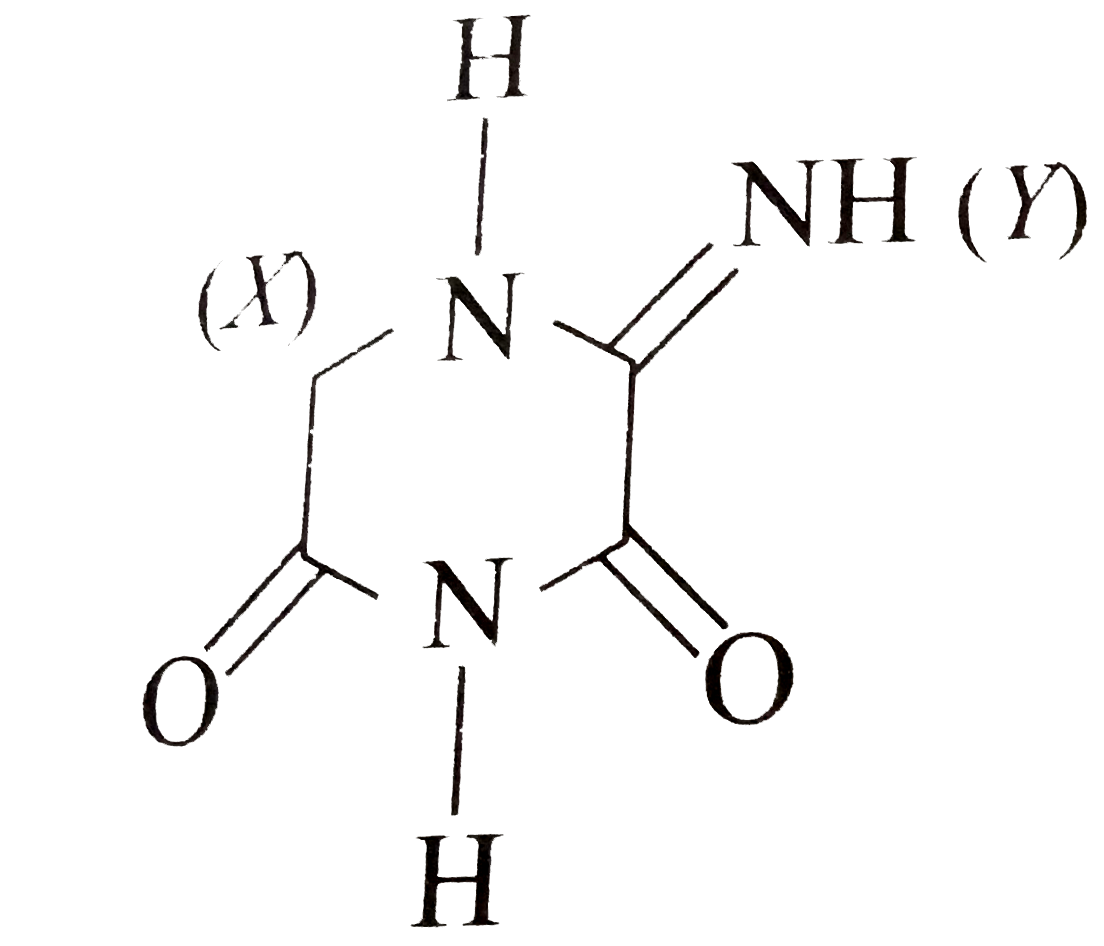Three elements X, Y and Z are in the 3rd periodic table. The oxides of X, Y and Z, respectively, are basic, amphoteric and acidic, The correct order of the atomic numbers of X, Y and Z is :
X<Y<Z
Y<X<Z
Z<Y<X
X<Z<Y
To solve the problem, we need to identify the elements X, Y, and Z based on the nature of their oxides: basic, amphoteric, and acidic. The elements are from the 3rd period of the periodic table, which includes the following elements:
1. Sodium (Na) - Atomic number 11
2. Magnesium (Mg) - Atomic number 12
3. Aluminum (Al) - Atomic number 13
4. Silicon (Si) - Atomic number 14
5. Phosphorus (P) - Atomic number 15
6. Sulfur (S) - Atomic number 16
7. Chlorine (Cl) - Atomic number 17
1. Identify the Oxides:
- Basic Oxide: The oxide that is basic is typically formed by metals. In the 3rd period, sodium (Na) and magnesium (Mg) form basic oxides. Sodium oxide (Na2O) and magnesium oxide (MgO) are basic.
- Amphoteric Oxide: Aluminum oxide (Al2O3) is amphoteric, meaning it can react with both acids and bases.
- Acidic Oxide: The oxides of non-metals are typically acidic. In the 3rd period, phosphorus (P) forms phosphorus trioxide (P2O3) and sulfur (S) forms sulfur dioxide (SO2), both of which are acidic.
2. Assign Elements to X, Y, Z:
- Since we need to assign the elements based on the nature of their oxides:
- Let’s assign X as the element with the acidic oxide, which can be phosphorus (P) or sulfur (S).
- Let’s assign Y as the element with the amphoteric oxide, which is aluminum (Al).
- Let’s assign Z as the element with the basic oxide, which can be sodium (Na) or magnesium (Mg).
3. Determine the Order of Atomic Numbers:
- The atomic numbers of the identified elements are:
- X (Acidic): Phosphorus (P) - Atomic number 15
- Y (Amphoteric): Aluminum (Al) - Atomic number 13
- Z (Basic): Sodium (Na) - Atomic number 11 or Magnesium (Mg) - Atomic number 12.
- Since we need to find the correct order of atomic numbers, we can conclude:
- X (P) > Y (Al) > Z (Na or Mg).
4. Final Order:
- Therefore, the correct order of atomic numbers is:
- X (P, 15) > Y (Al, 13) > Z (Na, 11) or (Mg, 12).
Conclusion:
The correct order of the atomic numbers of X, Y, and Z is: 15 (P) > 13 (Al) > 11 (Na) or 15 (P) > 13 (Al) > 12 (Mg).
2. Magnesium (Mg) - Atomic number 12
3. Aluminum (Al) - Atomic number 13
4. Silicon (Si) - Atomic number 14
5. Phosphorus (P) - Atomic number 15
6. Sulfur (S) - Atomic number 16
7. Chlorine (Cl) - Atomic number 17
- Basic Oxide: The oxide that is basic is typically formed by metals. In the 3rd period, sodium (Na) and magnesium (Mg) form basic oxides. Sodium oxide (Na2O) and magnesium oxide (MgO) are basic.
- Amphoteric Oxide: Aluminum oxide (Al2O3) is amphoteric, meaning it can react with both acids and bases.
- Acidic Oxide: The oxides of non-metals are typically acidic. In the 3rd period, phosphorus (P) forms phosphorus trioxide (P2O3) and sulfur (S) forms sulfur dioxide (SO2), both of which are acidic.
- Since we need to assign the elements based on the nature of their oxides:
- Let’s assign X as the element with the acidic oxide, which can be phosphorus (P) or sulfur (S).
- Let’s assign Y as the element with the amphoteric oxide, which is aluminum (Al).
- Let’s assign Z as the element with the basic oxide, which can be sodium (Na) or magnesium (Mg).
- The atomic numbers of the identified elements are:
- X (Acidic): Phosphorus (P) - Atomic number 15
- Y (Amphoteric): Aluminum (Al) - Atomic number 13
- Z (Basic): Sodium (Na) - Atomic number 11 or Magnesium (Mg) - Atomic number 12.
- Since we need to find the correct order of atomic numbers, we can conclude:
- X (P) > Y (Al) > Z (Na or Mg).
- Therefore, the correct order of atomic numbers is:
- X (P, 15) > Y (Al, 13) > Z (Na, 11) or (Mg, 12).
The correct order of the atomic numbers of X, Y, and Z is: 15 (P) > 13 (Al) > 11 (Na) or 15 (P) > 13 (Al) > 12 (Mg).
Topper's Solved these Questions
Similar Questions
Knowledge Check
- Question 1 - Select One

The correct basicity order of atoms X,Y and Z is :AX>Y>ZBZ>Y>XCZ>X>YDY>X>Z - Question 2 - Select One

The correct order of decreasing basic strength of x,y, and z is :Ax>y>zBx>z>yCy>x>zDy>z>x - Question 3 - Select One
Three elements of 3rd period x,y,z such that the oxide of X is acidic, y is amphoteric and z id basic, the order of atomic no of three elements isL
Ax>y>zBy>x>zCz>x>yDx>z>y
Three elements X, Y and Z have atomic numbers 7, 8 and 9 respectively.
Write the formula of compound formed between
X and YView SolutionThree elements, X, Y and Z belong to the same period. Their oxides are acidic, amphoteric and basic respectively. The order of electronegative of these elements in the periodic table is
View SolutionThree elements X , Y and Z have atomic numbers 19 , 37 and 55 respectively . Then the correct statements (s) is / are
View SolutionThe elements 'X', 'Y' and 'Z' form oxides which are acidic, basic and amphoteric respectively. The correct order of their electro negativity is
View SolutionThe elements x,y and z are present in one period of the periodic table. Chemically their oxides are acidic, amphoteric and basic respectively. When these elements are arranged in ascending order of atomic number they are
View Solution

